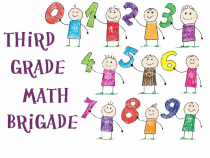Standards
CCSS.Math.Content.3.NF.A.3 Explain equivalence of fractions in special cases, and compare fractions by reasoning about their size.
Objectives
Anticipatory Set
Begin by asking students the following questions:
Task Analysis
Introduce the set representation by having each pair of students examine an egg carton filled with plastic eggs (or some other marker if plastic eggs are unavailable or cost prohibitive.)
Have students identify fraction relationships associated with the set (e.g., 6 of the set of 12 eggs is the same as 6/12 of the set, OR when the numerator stays the same and the denominator increases, the fractions become smaller — 1/3 is smaller in area than 1/2).
Have students work in pairs to continue the investigation as different numbers of eggs are used.
Materials
Closure
Benefits
Resources
CCSS.Math.Content.3.NF.A.3 Explain equivalence of fractions in special cases, and compare fractions by reasoning about their size.
- CCSS.Math.Content.3.NF.A.3a Understand two fractions as equivalent (equal) if they are the same size, or the same point on a number line.
- CCSS.Math.Content.3.NF.A.3b Recognize and generate simple equivalent fractions, e.g., 1/2 = 2/4, 4/6 = 2/3. Explain why the fractions are equivalent, e.g., by using a visual fraction model.
- CCSS.Math.Content.3.NF.A.3c Express whole numbers as fractions, and recognize fractions that are equivalent to whole numbers. Examples: Express 3 in the form 3 = 3/1; recognize that 6/1 = 6; locate 4/4 and 1 at the same point of a number line diagram.
- CCSS.Math.Content.3.NF.A.3d Compare two fractions with the same numerator or the same denominator by reasoning about their size. Recognize that comparisons are valid only when the two fractions refer to the same whole. Record the results of comparisons with the symbols >, =, or <, and justify the conclusions, e.g., by using a visual fraction model.
Objectives
- TLW demonstrate understanding that a fraction can be represented as part of a set, given a set of identical items
- TLW identify fractions when the whole (set) and part of the set is given
- TLW identify fraction relationships associated with the set, such as one fourth is one half of one half
Anticipatory Set
Begin by asking students the following questions:
- What is a carton of eggs typically called? Dozen
- How many eggs are in a carton? 12
- How many eggs are in a dozen? 12
Task Analysis
Introduce the set representation by having each pair of students examine an egg carton filled with plastic eggs (or some other marker if plastic eggs are unavailable or cost prohibitive.)
- Ask students how many eggs are in the set. [12] Suppose six are used to bake a cake.
- Have students remove six eggs. Students should record their egg configuration on the Eggsactly Eggs activity sheet.
- Have students participate in a gallery walk examining other students’ egg cartons to see all the different ways students might have removed six.
- What fraction of the entire set is 6? [6/12; accept 1/2 or other equivalent fractions.] If students do not make the connection between equivalent fractions, e.g., 6/12 = ___, they have an opportunity to develop these relationships in later lessons.
- What fraction was removed? [6/12 or 1/2] Have students label their recording sheet as 6/12. Some students may choose to label their sheet with an equivalent fraction, such as 1/2. If so, this provides an excellent opportunity to introduce equivalent fractions.
- Have students remove eight eggs. Students should record their egg configuration on the Eggsactly Eggs activity sheet.
- Have students go on another gallery walk to see all the different ways students might have removed eight.
- What fraction of the entire set is 4? [4/12; accept 1/3 or 2/6.]
- What fraction was removed? [8/12, 2/3, or 4/6.] For the remaining eggs, have students label their recording sheet as 4/12. [Accept 1/3 or 2/6.]
Have students identify fraction relationships associated with the set (e.g., 6 of the set of 12 eggs is the same as 6/12 of the set, OR when the numerator stays the same and the denominator increases, the fractions become smaller — 1/3 is smaller in area than 1/2).
Have students work in pairs to continue the investigation as different numbers of eggs are used.
- Students should be given time to investigate the variety of ways in which the eggs can be arranged.
- These arrangements should be recorded on the Eggsactly Eggs activity sheet and the sheet should be labeled according to the fraction. For example, students might use several images of the egg carton on the activity sheet to record all the ways to show x of a dozen.
- (Use the Eggsactly Eggs activity sheet to have students represent several different configurations all equivalent to 1/4 of a dozen.)
- Have students identify fraction relationships associated with the set (e.g., 1/2 of the set of 12 eggs is the same as 6/12 of the set, OR when the numerator stays the same and the denominator increases, the fractions become smaller, e.g. 1/3 is smaller in area than 1/2).
Materials
- Eggsactly Eggs Activity Sheet.
- A carton of eggs for each pair of students filled with plastic eggs
Closure
- Convene the whole class to discuss the activities in this lesson. The guiding questions may be used to focus the class discussion as they were used to focus individual student’s attention on the mathematics learning objectives of this lesson.
Benefits
- Using real life materials and situations are great for helping students better understand the concept of fractions and this allows for a more hands-on activity.
Resources
- NCTM: Illuminations

 RSS Feed
RSS Feed
